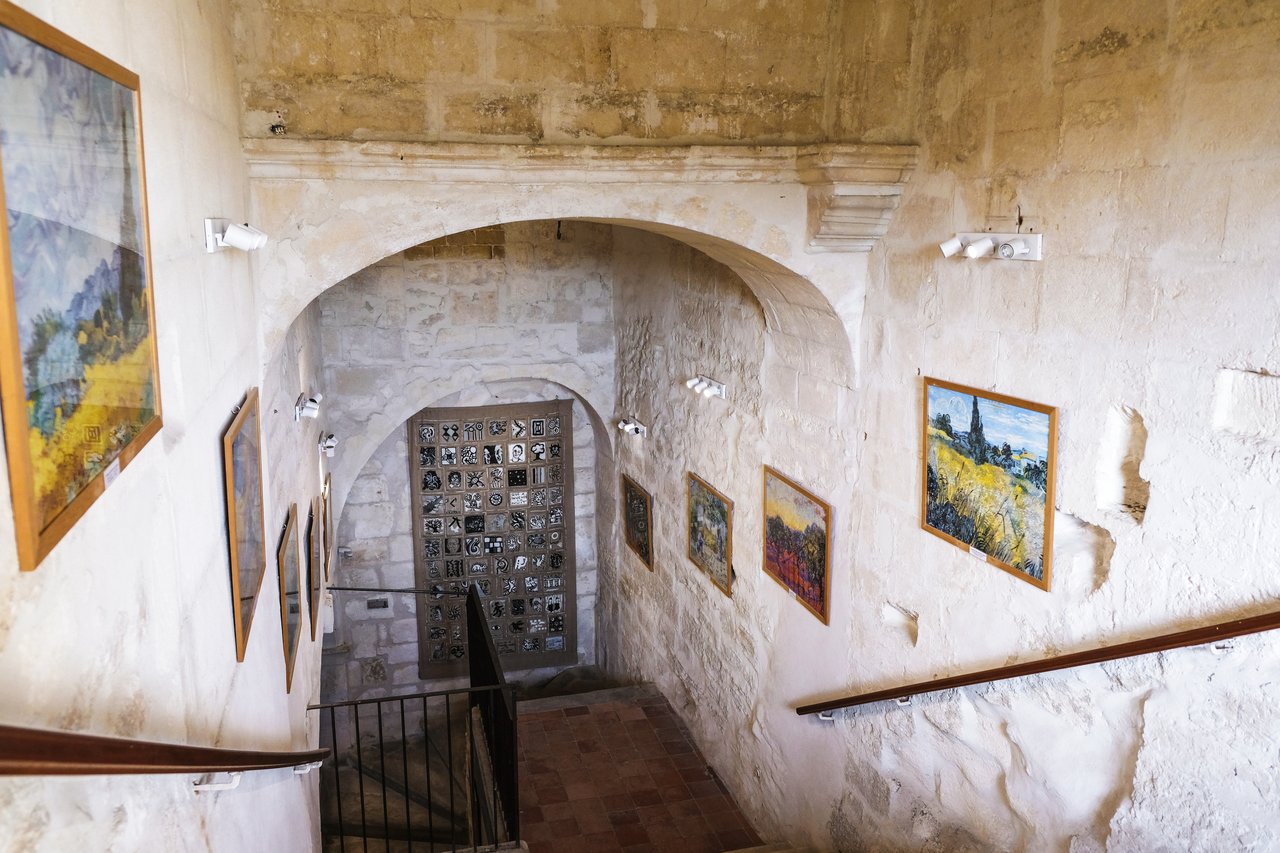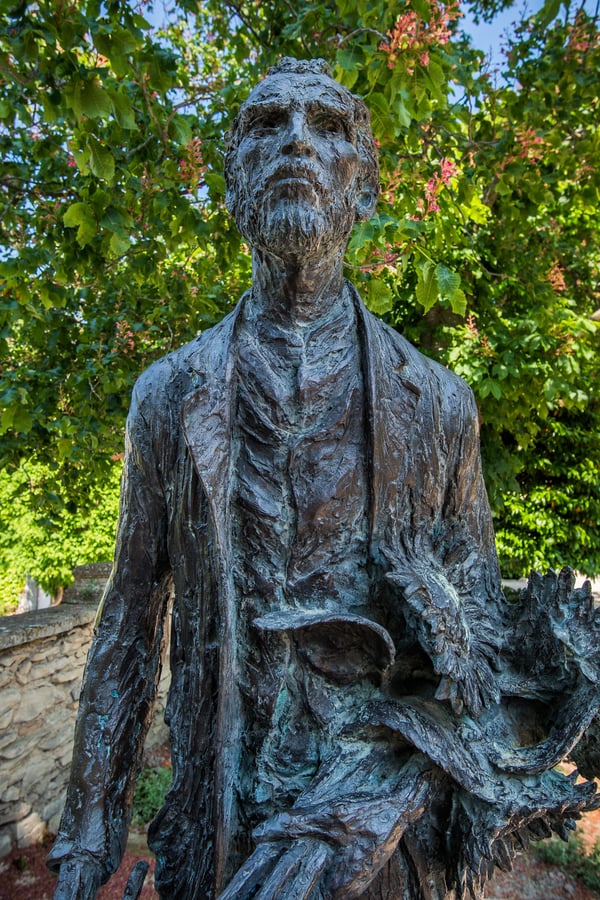The move to Provence: a pursuit of light and colour.
In early 1888, Vincent van Gogh left Paris for Arles, a small town in the south of France, seeking the vibrant light and rich colours of Provence. His journey was driven by a desire to find inspiration in the landscape and atmosphere of this region. Van Gogh believed that the bright light of the south would bring new energy to his work, and he was not disappointed. The azure skies, flowering fruit trees, and deep greens of the cypress trees reminded him of the Japanese prints he admired. He was so captivated by the environment that he envisioned creating an artists' community in Arles, a place where creativity could flourish. In this article, we will explore Van Gogh's life in Provence, delving into the key defining moments of his career that helped to put this region on the map as a significant destination for art and culture.
The Arles period: an intense burst of creativity
Van Gogh’s time in Arles marked a period of extraordinary creativity. During his fifteen-month stay, he produced over 350 works, many of which are now considered masterpieces. Some of his most recognised paintings, such as "Vase with 12 Sunflowers," "Bedroom in Arles," "Van Gogh’s Chair," and "The Café Terrace on the Place du Forum," were created here. The vibrant colours and dynamic compositions of these works reflect the intensity of Van Gogh’s artistic vision during this time.
In October 1888, Paul Gauguin joined Van Gogh in Arles. For two months, they lived and worked together, inspiring each other yet clashing due to their differing temperaments. This period of collaboration ended in a mental crisis for Van Gogh, leading him to cut off part of his left ear. Gauguin’s departure from Arles shattered Van Gogh’s dream of establishing an artists' community, leaving him to grapple with the emotional aftermath.
A year of reflection and creation at Saint-Rémy-de-Provence
Following the traumatic events in Arles, Van Gogh admitted himself to the Saint-Paul de Mausole psychiatric hospital in Saint-Rémy-de-Provence in May 1889. He spent a year there, a period marked by both profound mental struggle and remarkable artistic output. Despite his challenges, Van Gogh created nearly 150 paintings and numerous drawings during his time at the hospital. His works from this period, such as "The Starry Night," "The Irises," and "Almond Blossoms," are deeply influenced by the natural surroundings, including the olive groves and cypress trees that dotted the landscape around the hospital.
The monastery of Saint-Paul de Mausole, where Van Gogh was treated, remains a site of great interest. Visitors can explore the artist’s reconstructed room, walk through the serene cloisters, and view large-scale reproductions of his paintings in the very locations where they were created. This experience offers a direct connection to the landscapes that inspired some of Van Gogh’s most famous works.
Van Gogh’s lasting legacy in Provence
Although Van Gogh left Provence in May 1890, the region continues to honour his legacy. The landscapes of Arles and Saint-Rémy-de-Provence remain largely unchanged, providing visitors with an opportunity to experience the same vistas that inspired the artist. The Van Gogh Route in Saint-Rémy is a popular walking tour that guides visitors through the countryside that Van Gogh immortalised in his paintings. Along the route, nineteen reproductions of his works are displayed at the exact locations where they were painted, offering a unique perspective on the artist’s process.
In Arles, visitors can follow Van Gogh’s footsteps to key sites such as Café le Soir, the Trinquetaille Bridge, and the Place du Forum. Although the Yellow House where Van Gogh lived was destroyed during the Second World War, a memorial now stands in its place. This walking tour allows visitors to explore the locations that were central to Van Gogh’s artistic development during his time in Provence.
Museums and cultural sites dedicated to Van Gogh
Provence is rich in museums and cultural sites that celebrate the life and work of Vincent Van Gogh. Among these, the Estrine Museum and Van Gogh Interpretation Centre in Saint-Rémy-de-Provence stands out as a must-visit destination for art enthusiasts. This museum offers a comprehensive multimedia experience that allows visitors to delve into Van Gogh’s artistic journey and understand his profound influence on modern art. The Estrine Museum not only showcases Van Gogh’s connection to Provence but also continues his legacy by hosting temporary exhibitions featuring contemporary artists who draw inspiration from his work. This dynamic approach keeps Van Gogh’s innovative spirit alive, making the museum a vibrant hub for those looking to explore the ongoing impact of one of the world’s most famous artists.

Vincent van Gogh’s time in Provence was a period of both intense creativity and personal turmoil. The region’s unique light and colours profoundly influenced his work, leading to the creation of some of his most celebrated paintings. Today, Provence remains a testament to Van Gogh’s genius, offering visitors the chance to explore the landscapes that so deeply inspired one of the world’s most renowned artists. Whether walking the Van Gogh Route in Saint-Rémy or visiting the key sites in Arles, there is much to discover for those interested in Van Gogh’s enduring legacy.
A bientôt,
The Provence Holidays Team




































